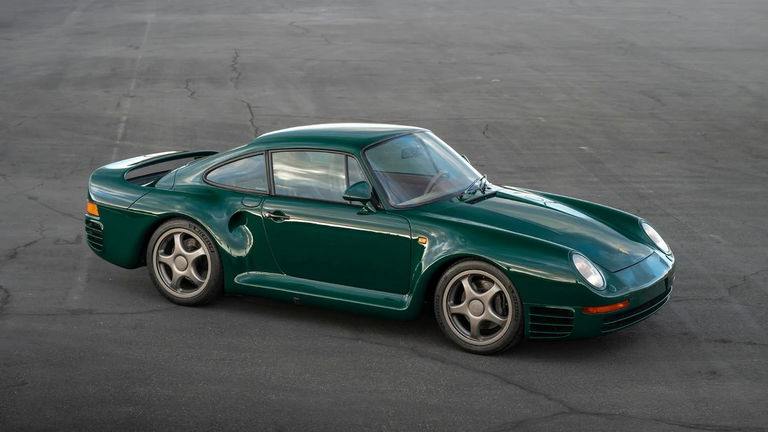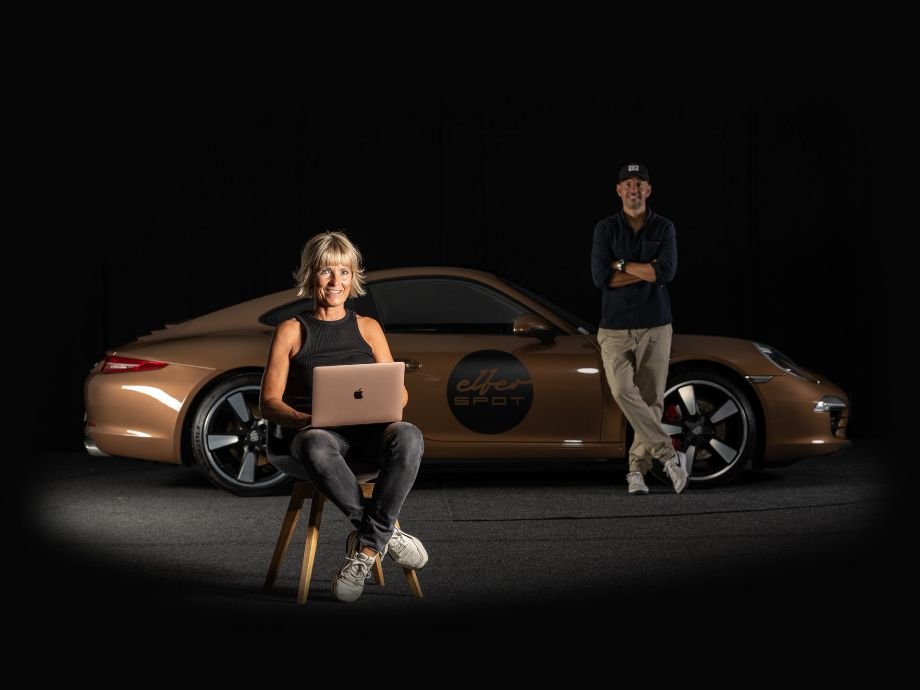Porsche stunned the automotive world when it introduced the 959 at the 1983 Frankfurt Motor Show. Known internally as the Type 961, the car was intended to be the German carmaker's entry into the state-of-the-art FIA International Rally Championship, Group B, an old-school rally where virtually any technique was permitted. This policy of unlimited possibilities encouraged a long list of car manufacturers to develop incredibly powerful and extremely fast vehicles, all of which required the production of at least 200 street-legal examples on which to base these rally specials. The 959's chassis shared the same wheelbase as the 911 Carrera, and the center section of the cabin, including the embossed floor, was almost identical to that of the 911.
The front trunk lid and the doors were made of aluminum, the extended front section with the almost flush headlights was molded from polyurethane, the rest of the outer skin was made of fiberglass-reinforced Kevlar. Extensive ducts and vents were located in the nose to cool the front brakes and oil cooler. The rear part of the body was greatly lengthened and widened, generously ventilated and crowned with a rear wing over the entire width. Powering this advanced chassis was the real showstopper of the 959. A 2.85-litre, sequentially twin-turbocharged, double overhead camshaft and flat-six engine with air-cooled cylinders and water-cooled 24-valve heads. The engine was largely based on the engines used in the brilliant IMSA GT coupe “Moby Dick” and in Porsche's Indy Open Wheel projects. Fitted with two asymmetric turbochargers, both of which were intercooled, this engine delivered power seamlessly, with one small turbocharger revving up from almost idle to generate low-end boost, while the second exhaust-driven turbine came into play at 4,500rpm came. At full throttle and maximum boost pressure, this relatively small engine delivered a breathtaking 450 hp. Power was sent through a specially designed BorgWarner six-speed transmission, which featured an extremely low gearing to allow the Type 961 to be used off-road. The Porsche-Steur-Kupplung (PSK) all-wheel-drive system allowed the driver to vary the 370 pounds of torque between the rear and front axles and shift up to 80 percent to the rear axle under hard acceleration, which was electronically controlled. The 959's sophisticated suspension was also racing-derived, with double wishbones at each corner, coil springs and dual shock absorbers that could be adjusted at the turn of a knob from the driver's seat. Both the vehicle height and the shock absorbers were electronically adjustable, and a whole array of instruments kept the driver informed of everything that was going on behind and under the car. Special 17-inch magnesium alloy wheels and model-specific run-flat tires were developed for the 959 and featured one of the first automatic pressure monitoring systems. Most 959s came as 'Comfort' models with a range of amenities including full leather interiors and air conditioning. The 959 was an amazing performer. It reached a speed of 100 km/h in less than four seconds and covered the quarter mile standing up in about 12 seconds, making it the fastest street-legal production car of its time. After Group B racing ceased in 1986, the 959 continued to be built as a road car for customers, although it cost so much to produce that Porsche is said to have made a 50 percent loss on each vehicle. Only 292 examples were built until production ended in 1988.







































